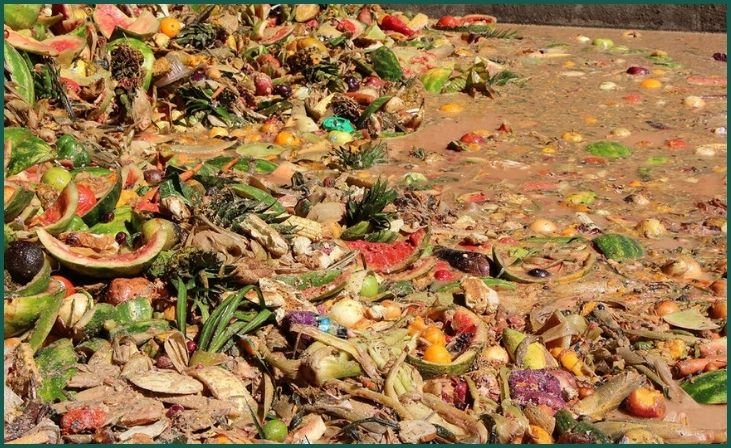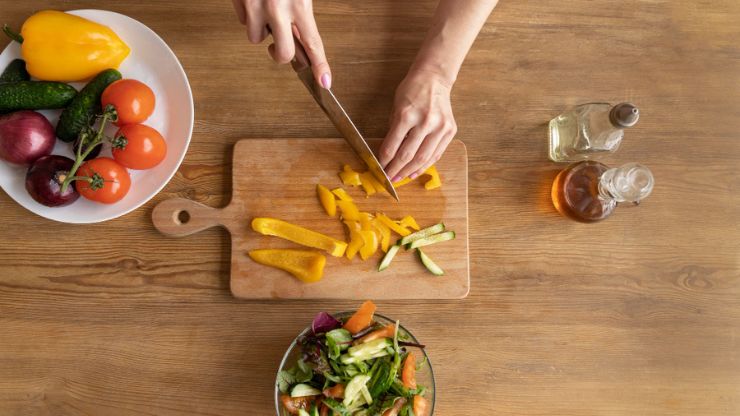In today’s era of heightened awareness about sustainability and resource conservation, maximizing the use of every component of our food has become imperative. Vegetable scraps, commonly disregarded and thrown away, possess untapped potential for both culinary delights and eco-friendly practices. From carrot tops to broccoli stems, these often-overlooked scraps can be transformed into flavorful meals and sustainable solutions.
In this guide, we’ll explore seven innovative ways to repurpose vegetable scraps, offering practical tips to minimize waste and embrace a more sustainable lifestyle. By harnessing the versatility of vegetable scraps, we not only unlock new culinary possibilities but also contribute to reducing food waste and promoting environmental stewardship in our communities.
Table of Contents
ToggleLook At Use of Vegetable Scraps
Homemade Vegetable Broth:

Making homemade vegetable broth from leftover vegetable scraps is a practical and sustainable solution to minimize waste in the kitchen. By repurposing onion skins, carrot tops, celery ends, and other trimmings that would typically be discarded, you can create a flavorful broth with minimal effort. Simply collect these scraps in a freezer bag until you have enough to make a batch of broth.
Then, simmer the scraps in water along with herbs and seasonings of your choice to extract their flavors. This homemade broth serves as a nutritious and versatile base for various dishes such as soups, stews, and sauces. Not only does this practice reduce food waste, but it also adds depth of flavor to your culinary creations, making it a win-win solution for both your kitchen and the environment.
Read Also: How To Save Money With Fermented Food Scraps?
Composting:
Composting vegetable scraps is a simple yet powerful method to minimize landfill waste and promote environmental sustainability. By diverting scraps from the trash and channeling them into compost piles or bins, individuals can facilitate the natural decomposition process of organic matter. Vegetable scraps, alongside fruit peels, coffee grounds, and other biodegradable materials, transform into nutrient-rich compost over time. This compost serves as a valuable soil amendment, enhancing soil fertility and structure while reducing the need for synthetic fertilizers in gardening and agriculture.
Additionally, participating in community composting programs amplifies the impact by collectively addressing food waste on a larger scale. Embracing composting not only reduces greenhouse gas emissions from decomposing organic matter in landfills but also fosters a more sustainable approach to waste management and land stewardship, ultimately contributing to a healthier environment for future generations.
Regrow Vegetables:
Regrowing vegetables from scraps presents an innovative way to maximize resources, save money, and foster sustainability in your home. By harnessing the regenerative potential of certain vegetable scraps, such as green onions, lettuce, celery, and garlic, individuals can initiate new growth and cultivate fresh produce from kitchen remnants. This practice involves placing root ends or other suitable portions of vegetables in water or soil, providing them with the conditions needed to sprout and develop into new plants.
While not all scraps may successfully regrow, the process serves as an engaging and educational experience, reconnecting individuals with the food they consume and promoting a deeper understanding of plant life cycles. Experimenting with regrowing vegetables not only reduces food waste but also empowers individuals to take proactive steps towards self-sufficiency and environmental stewardship in their own homes.
Flavorful Seasonings:

Don’t overlook the potential of vegetable scraps to elevate your culinary creations as flavorful seasonings and spice blends. Instead of tossing herb stems, carrot greens, or pepper cores, repurpose them by drying them in a low oven or dehydrator until crisp. Once dried, grind them into powders or crush them into flakes to create homemade seasonings bursting with natural flavors.
Don't just scroll, subscribe!
BuzzTrail's unique web-stories are the cure for boredom you've been waiting for.
These versatile seasonings can infuse depth and complexity into various dishes, including soups, salads, marinades, and roasted vegetables. By utilizing scraps in this manner, you not only minimize waste but also enrich the taste of your meals in an eco-friendly and sustainable manner. It’s a simple yet effective way to maximize the utility of every part of your vegetables while enhancing the culinary experience.
Infused Vinegars and Oils:
Repurposing vegetable scraps by infusing them into vinegar or oil is a creative and practical way to enhance your culinary repertoire while minimizing waste. Begin by placing clean scraps like garlic cloves, herb sprigs, or citrus peels into a bottle of vinegar or oil, allowing them to steep for several weeks. During this time, the scraps release their natural flavors, infusing the liquid with freshness and complexity.
The resulting infused vinegars and oils can then be used to elevate a variety of dishes, including salads, marinades, sauces, and dips, imparting a unique twist to your culinary creations. By incorporating this method into your kitchen routine, you not only contribute to sustainability efforts by reducing food waste but also gain the flexibility to tailor the flavor profile of your cooking oils and vinegars according to your preferences.
Homemade Veggie Chips:
Transforming vegetable peels and scraps into homemade chips is a fantastic way to minimize waste while indulging in a tasty and nutritious snack. Instead of discarding potato peels, carrot peels, kale stems, and other vegetable scraps, simply coat them with oil and your choice of seasonings before baking or air-frying until crispy. The result is a flavorful and crunchy chip alternative that’s packed with vitamins and fiber.
Whether enjoyed as a guilt-free snack on the go or served as a crowd-pleasing appetizer at gatherings, these homemade veggie chips are sure to impress. By repurposing scraps into snacks, you not only contribute to sustainability efforts but also discover creative ways to elevate your culinary repertoire with delicious and wholesome treats.
Read Also: Exploring A Variety Of Fermented Foods Recipes At Home
Feed Livestock:

Utilizing vegetable scraps as feed for livestock or chickens offers a dual benefit of minimizing waste and providing nutritious supplements to their diet. Instead of discarding scraps like carrot tops, cabbage leaves, and broccoli stalks, repurpose them as a wholesome addition to your animals’ regular feed. This practice not only reduces food waste but also diversifies the nutritional content of their diet, potentially enhancing their overall health and well-being.
However, it’s crucial to exercise caution and avoid feeding them scraps that may be harmful or toxic, such as onion skins, avocado pits, and citrus peels. By incorporating vegetable scraps into animal feed, you contribute to sustainable agricultural practices while ensuring that your livestock or chickens receive a balanced and varied diet.
Bottom Line
In conclusion, vegetable scraps are a valuable resource that can be utilized in numerous creative and sustainable ways. From making homemade broth and composting to regrowing vegetables and creating flavorful seasonings, there are countless opportunities to reduce waste and enhance your culinary repertoire. By incorporating these practices into your routine, you can not only minimize your environmental footprint but also save money and enjoy delicious meals made from the whole vegetable. So the next time you’re preparing vegetables, think twice before tossing those scraps – they may just be the key to unlocking new culinary adventures.
FAQs
What types of vegetable scraps can I use to make homemade broth?
What types of vegetable scraps can I use to make homemade broth?
You can use a wide variety of vegetable scraps to make homemade broth, including onion skins, carrot tops, celery ends, mushroom stems, and herb stalks. Avoid using scraps that are moldy or spoiled, and be cautious with strongly flavored vegetables like broccoli or cabbage, as they may overpower the broth.
Can I compost all types of vegetable scraps?
Can I compost all types of vegetable scraps?
While most vegetable scraps are compostable, there are some exceptions. Avoid composting scraps that are oily, cooked in oils, or contaminated with meat or dairy products, as these can attract pests and create odors. Additionally, it’s best to avoid composting scraps from diseased plants or weeds to prevent the spread of pathogens.

